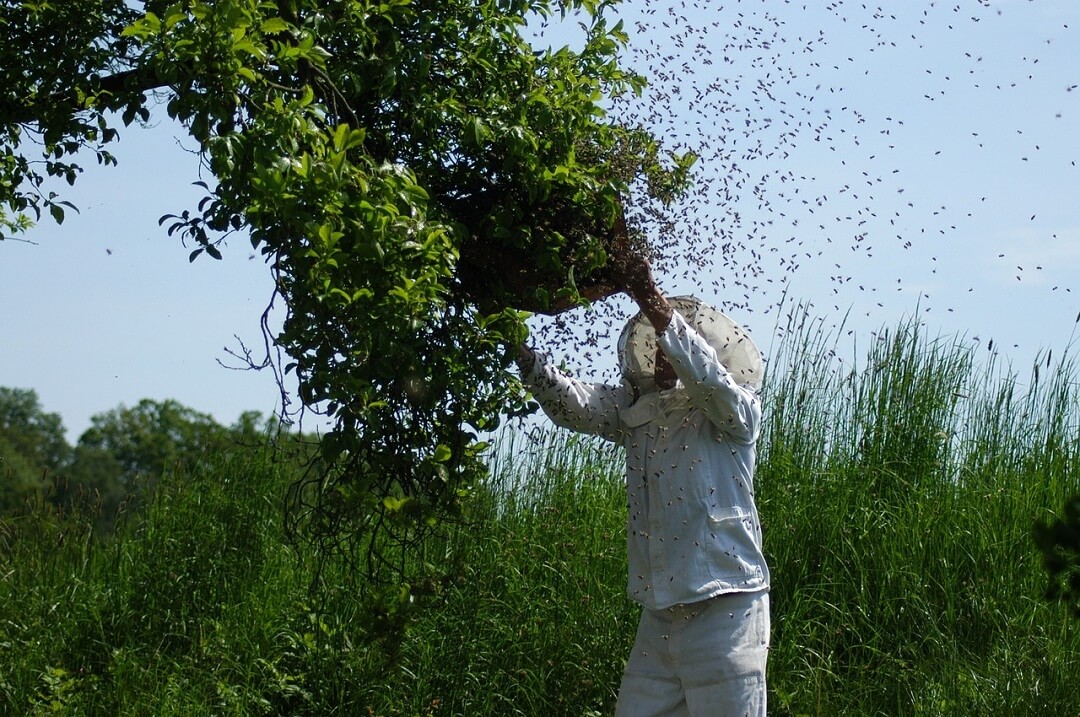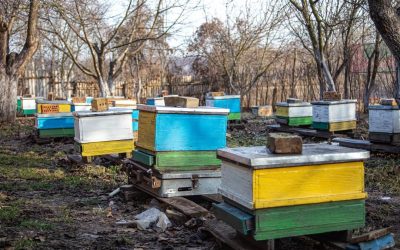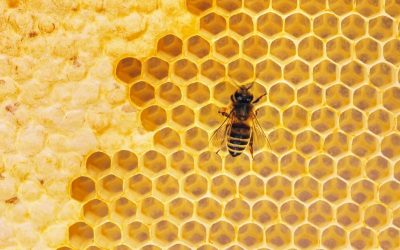One of the most critical aspects of beekeeping is recognizing the signs of bee swarming and taking the necessary steps to prevent or control it. Swarm prevention and control are crucial for maintaining a healthy and productive bee colony, and this guide will provide you with a step-by-step approach to help you recognize and manage bee swarming.
Whether you are a beginner or an experienced beekeeper, this guide will provide the information and knowledge you need to keep your bees healthy and happy. By understanding why bees swarm, the signs to look out for, and the best practices for preventing and controlling swarming, you can help ensure the longevity and success of your bee colony.
Key Takeaways
- Bee swarming is a natural phenomenon when the bee population in a colony becomes too large and overcrowded.
- Recognizing bee swarming signs, such as increased bee activity and the presence of a queen bee, is crucial for preventing and controlling bee swarms.
- Implementing preventative measures, such as reducing the amount of stress on the colony and ensuring proper ventilation, can help to stop bees from swarming.
- If a swarm does occur, controlling it involves safely removing the bees and relocating them to a new hive.
It’s important to take steps to control bee swarms and ensure people’s and property’s safety, as bee swarms can threaten both.
Understanding Bee Swarm Behavior
Bee swarming is a natural phenomenon that occurs when a colony of bees splits and forms a new colony. It’s a critical part of the life cycle of bees, and understanding their behavior during this time is essential for effective bee swarm prevention and control. In this section, we’ll explore the reasons why bees swarm, the signs to look out for, and the biology behind bee swarming.
By gaining a better understanding of bee swarm behavior, you’ll be better equipped to take the necessary steps to prevent bee swarms from forming and control them if they do occur.
What is a Bee Swarm?
A bee swarm is a group of honey bees that have left their original colony and are in search of a new home. This is a natural and normal process in the life cycle of a honey bee colony. During the swarm, the queen bee leaves the old colony with a large group of worker bees and scout bees to find a new place to establish a colony.
Why Do Bees Swarm?
Bees swarm to reproduce and form new colonies. This process occurs when the original colony becomes overcrowded or when the queen bee is old or weak and is replaced by a new queen. The old queen takes a portion of the worker bees and flies off to start a new colony.
Bee Swarming Signs
There are several signs that indicate a bee swarm is about to occur, including an increase in bee activity near the entrance of the hive, an abundance of bees flying in and out of the hive, and the appearance of scout bees looking for a new home. Another sign is the formation of a large cluster of bees on a branch or other object near the hive as they wait for the scout bees to return with information about a new location for their colony.
By understanding the behavior of bee swarms and recognizing the signs, beekeepers can take proactive steps to prevent or control a swarm. In the next section, we will explore the steps you can take to stop bees from swarming and protect your colony.
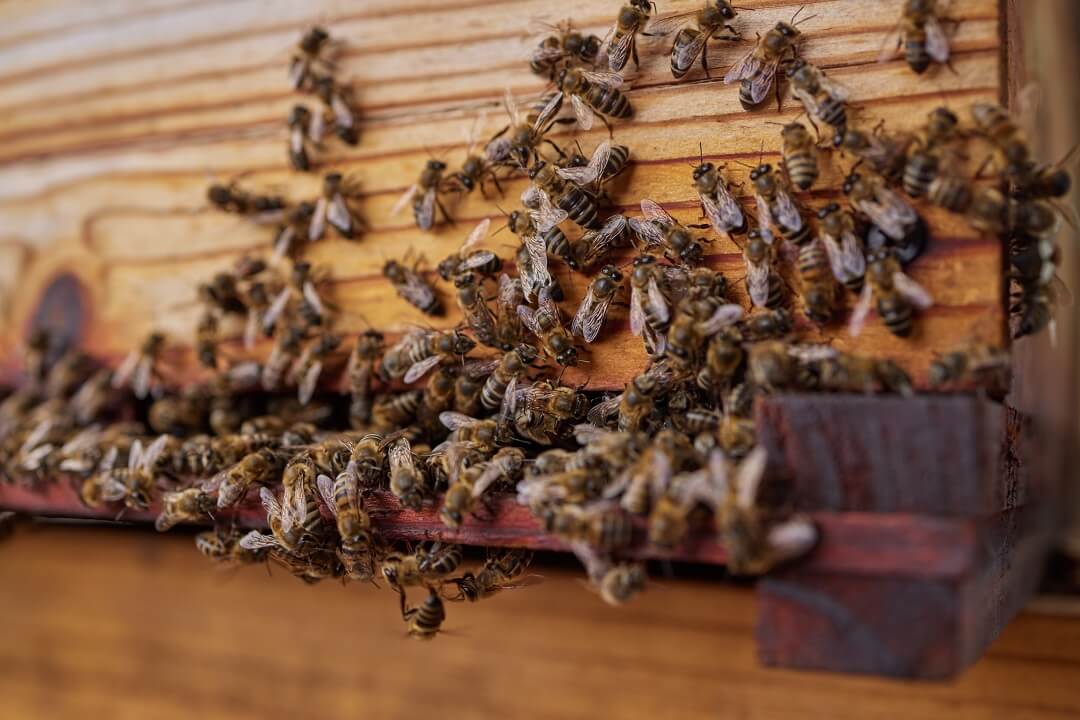
Recognizing Bee Swarming Signs
Understanding the signs of bee swarming can help beekeepers take proactive measures to prevent and control swarming and maintain a healthy colony of bees.
Bee swarming can be recognized by observing the behavior and activity of the bees within the colony. Some common signs of bee swarming include:
- Increased bee activity near the entrance of the hive: As the bees prepare to swarm, they will become increasingly active near the entrance of the hive. This increased activity may include the formation of clusters outside the hive, as well as an increase in the number of bees entering and leaving the hive.
- The presence of scout bees: Before a swarm occurs, scout bees will leave the colony to search for a suitable location for the new colony. These scout bees can often be seen flying in and out of the hive in search of a new location.
- Queen cups and queen cells: Queen cups and queen cells are structures within the hive that are used to rear new queens. The presence of these structures can be an indicator that the colony is preparing to swarm, as the old queen will leave the colony with a portion of the bees to form a new colony.
- Decreased honey production: As the colony prepares to swarm, the bees may reduce the amount of honey they produce as they focus their efforts on preparing for the swarm.
By recognizing these bee-swarming signs, beekeepers can take proactive measures to prevent and control swarming and ensure the health and stability of their colonies. Understanding the behavior of bees and recognizing the signs of swarming is an essential part of responsible beekeeping.
Preventing Bee Swarms
Preventing bee swarms is a key component of successful beekeeping. There are several steps that you can take to reduce the likelihood of a swarm occurring in your beehive. Here are some of the most effective preventative measures:
- Monitor Hive Population: Keeping a close eye on the population of bees in your colony is an essential part of preventing swarms. As the population grows, it’s important to add more boxes or supers to the hive to provide additional space for the bees. This will help to prevent overcrowding, which is one of the primary triggers for swarming.
- Provide Adequate Food and Water: Another key factor in preventing swarming is ensuring that your bees have access to enough food and water. If the colony is stressed due to a lack of resources, it may trigger a swarm in order to find more resources elsewhere.
- Regular Hive Inspections: Regularly inspecting your hives can help you to identify potential swarm triggers early on before they become a problem. This will give you time to address the issue and reduce the likelihood of a swarm occurring.
- Make Sure Queens are Healthy: Healthy queens are essential for preventing swarms. If the queen is sick or otherwise unable to lay eggs effectively, the colony may become unstable, leading to swarming. Regularly checking the health of your queen can help you to identify potential issues before they become a problem.
- Implement Appropriate Space Management: Proper space management is critical for preventing swarming. As the colony grows, it’s important to add more boxes or supers to provide additional space for the bees. This will help to prevent overcrowding, which is one of the primary triggers for swarming.
By following these steps, you can help to prevent swarms from occurring in your beehive and maintain a healthy, productive colony.
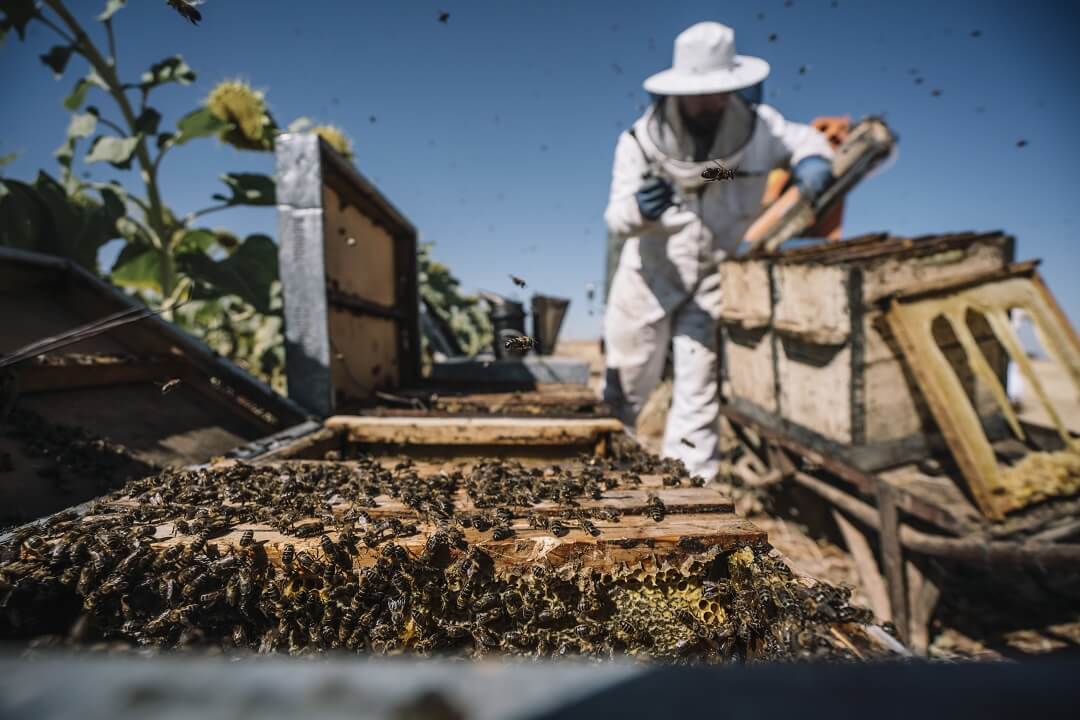
Controlling Bee Swarms
Bee swarming can be a confusing and potentially dangerous situation for beekeepers. In this section, we will outline the steps to control bee swarms and provide guidance on how to manage a bee hive swarm in a safe and effective manner. There are various techniques that can be used to control bee swarms while ensuring the safety of people and property.
Steps to Control Bee Swarms
- Locate the swarm: The first step in controlling a bee swarm is to locate the swarm and assess the situation. It is important to be cautious when approaching a swarm, as the bees may become aggressive if they feel threatened.
- Determine the size of the swarm: The size of the swarm will determine the best course of action for controlling it. If the swarm is small, it may be possible to remove it by hand, while larger swarms may require more extensive measures.
- Call a professional: If the swarm is large or in a difficult to reach location, it is best to call a professional beekeeper or pest control specialist. These individuals have the experience and equipment necessary to safely remove the swarm and relocate the bees.
How to Manage a Bee Hive Swarm
- Keep the swarm calm: The key to managing a bee hive swarm is to keep the bees calm and avoid disturbing them. You can do this by covering the swarm with a blanket or cloth and providing it with a new home or temporary shelter.
- Provide a new home: If the swarm is not already in a beehive, it is important to provide it with a new home as soon as possible. This will prevent the swarm from becoming disoriented and allow the bees to establish their new colony.
- Monitor the swarm: After relocating the swarm, it is important to monitor it for a few days to ensure that it has settled into its new home. If the swarm does not appear to be thriving, it may be necessary to seek additional help from a professional beekeeper.
Techniques for Controlling Bee Swarms
- Relocating the swarm: One of the most effective techniques for controlling bee swarms is to relocate the bees to a new home. This can be done by capturing the swarm in a bee box or by providing the bees with a new beehive.
- Using smoke: Smoke can be used to calm the bees and make it easier to remove the swarm. This can be done by lighting a smoky fire near the swarm or by using a bee smoker.
- Removing the queen: If the swarm is not responding to other techniques, it may be necessary to remove the queen bee. This can be done by capturing the queen and placing her in a separate beehive or by using a queen excluder to prevent her from returning to the swarm.
Conclusion
In conclusion, bee swarming is a natural phenomenon that occurs when the population of bees in a colony becomes too large. While it’s a normal part of the life cycle of honey bees, it can be inconvenient and potentially dangerous for beekeepers and those nearby.
By understanding the triggers of bee swarming and recognizing the signs, beekeepers can take preventative measures to reduce the likelihood of swarms occurring. If a swarm does occur, there are a variety of techniques and steps that can be taken to safely and effectively control the situation.
With the right knowledge and preparation, beekeepers can ensure the health and safety of their bees and their surrounding environment.

